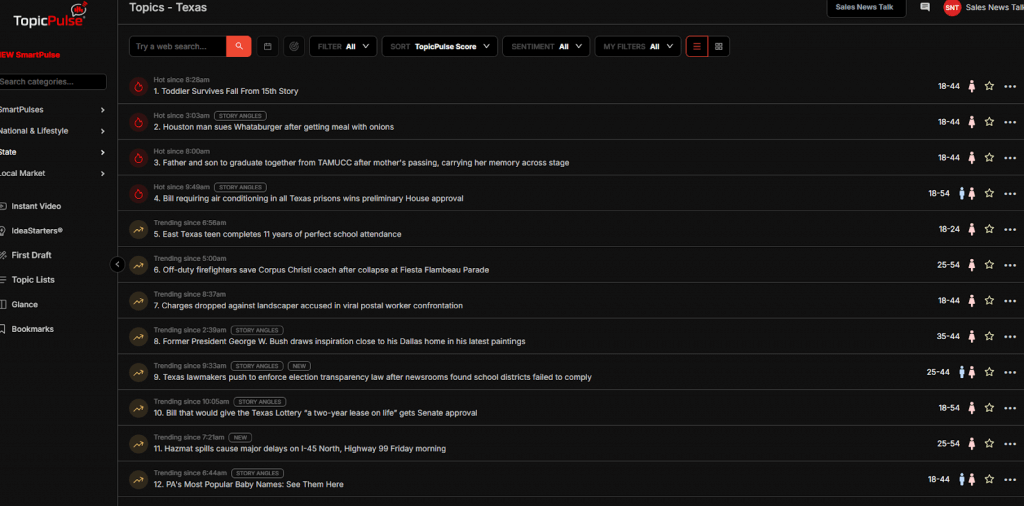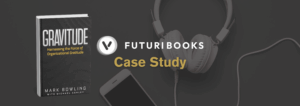In a news ecosystem flooded with alerts, algorithms, and audience fatigue, real-time AI insights help reporters focus on what matters—and remember why they started.
Time is journalism’s most precious—and most threatened—resource.
Even the most respected newsrooms, the ones committed to public-interest reporting and editorial independence, are facing a difficult paradox. While they expand coverage, hire more journalists, and grow their audience, they also push their teams to operate relentlessly.
One of the most widely read digital news publishers in the United States has recently grown its editorial staff, launched new verticals, and increased its supporter base by more than 60%. It has emerged as a top 25 digital news destination in the U.S., competing in a crowded media landscape by delivering serious, values-driven journalism. But sustaining that kind of growth, without burning out the people behind the stories, is a challenge that headlines don’t always capture.
“The Big Switchoff”
The Reuters Institute has called it “the big switch-off,” a trend in which readers, especially younger ones, are entirely tuning out of the news. The fatigue is real, and not just for audiences. The pressure to keep up with fast-moving digital conversations is constant inside the newsroom.
Journalists are no longer just reporting the news. They’re monitoring social channels and news publications at 11 p.m., decoding Reddit threads over coffee, and walking into pitch meetings already behind on what’s trending. That isn’t sustainable. It’s exhausting and taking time away from the deeper, investigative work that defines high-impact journalism.
Newsroom teams need support and tools that protect their time, prioritize their focus, and restore their ability to tell meaningful stories without being pulled in a thousand directions.
No More Black-Box Algorithms
These newsroom teams want a tool that honors their editorial judgment and understands the nuance between what’s trending and what’s truly relevant.
A system that catches the surge of a grassroots issue before it hits mainstream and nudges an editor with, “This might deserve your lens.”That means avoiding black-box algorithms and instead embracing platforms that:
- Surface trends before they peak, giving journalists a meaningful head start
- Provide sentiment, origin, and source breakdowns (not just viral scores)
- Allow filtering by topic areas aligned with editorial priorities (e.g., climate, labor, justice)
- Integrate seamlessly into existing tools like Slack or in-house dashboards (think The Guardian’s Ophan meets a real-time editorial insights assistant)
A trend discovery platform like TopicPulse can act as a digital researcher, scanning across hundreds of digital channels—not to chase clicks, but to spot emerging conversations that merit real journalism. In practice, this means editors start their day not with fatigue but with foresight: a feed of credible, context-rich insights on what audiences are already wondering about.
TopicPulse highlights storylines based on substance, relevance, and audience fit. Editors can filter by vertical, such as justice, climate, or wellness, and receive data-driven context around why a story is trending, who it resonates with demographically, and how long it’s been gaining traction.
These features don’t just make editorial planning faster—they make it less exhausting.
A Real-Time Example: What Editorial Teams See
TopicPulse is designed for newsrooms that demand more from technology.
Take a look at this snapshot from TopicPulse tracking Texas-based stories. Editors can instantly see:
- A bill requiring air conditioning in Texas prisons is gaining momentum and already marked as “hot.”
- A human-interest story about a toddler surviving a 15th-floor fall is trending fast among women aged 18–44.
- Editors can view trending timestamps, demographics, and suggested story angles on one screen.
This convenient dashboard allows editorial teams to spend less time chasing noise and more time deciding what deserves coverage. For large national publishers with state-by-state coverage, tools like TopicPulse help maintain relevance across regions without draining editorial bandwidth. This means being able to:
- Prioritize what’s worth chasing
- Spot overlooked but rising local topics
- Package and distribute content faster
- Meet audience expectations without relying on guesswork
Because journalists deserve better tools, not burnout.
Real Newsrooms Are Already Seeing the Value
Across the country, TopicPulse is helping newsrooms make smarter, faster editorial decisions:
- At a newsroom in Tennessee, a digital content manager initially dismissed a story about a lottery winner. TopicPulse flagged it as trending, so they published it, and it became their third most-read story of the day.
- A newsroom in the Midwest used TopicPulse to spot a local traffic issue, which they expanded into a broader infrastructure story. This resulted in over 130,000 pageviews and a strong social media response.
These wins show what happens when technology is built to support editorial judgment rather than override it.
Watch the latest content intelligence webinar, where newsroom leaders share real-world strategies and results.
[button class=”” href=”https://content.futurimedia.com/thenewrulesofengagement” label=”Watch now” target=””]
Built for Newsrooms That Value Integrity
The newsroom we’re speaking to here is not chasing headlines for clicks. Its leadership has made public commitments to values like transparency, trust, and independence. They’ve experimented with their own in-house tools. They’ve participated in innovation labs and led the way in digital storytelling formats. Their product and editorial teams care deeply about how technology affects the work and the people behind it.
That’s why any tool they consider must meet high standards—not just in performance, but in purpose.
TopicPulse was built with that philosophy in mind. It integrates into existing workflows, complements the editorial process, and keeps final decisions firmly in the hands of the newsroom. It helps teams see what’s coming so they can respond with depth, clarity, and confidence —giving them the edge to be first and never miss the moment.
Time Is the Difference Between News and Journalism
News is fast, journalism is thoughtful, and the difference between the two often comes down to time. Reclaiming that time is necessary in a newsroom that has grown rapidly, expanded its U.S. presence, and ranked among the top 25 digital publishers.
At this point, we understand that ethical AI doesn’t replace the story. However, it can ensure that informed journalists are not exhausted and tell the right stories.
That’s not just a productivity tool. That’s a newsroom ally.
Ready to give your journalists the time they deserve?
See how TopicPulse can help your newsroom surface smarter stories, faster, without compromising editorial standards.
[button class=”” href=”https://futurimedia.com/solutions/topicpulse/” label=”Request a strategy session” target=””]









